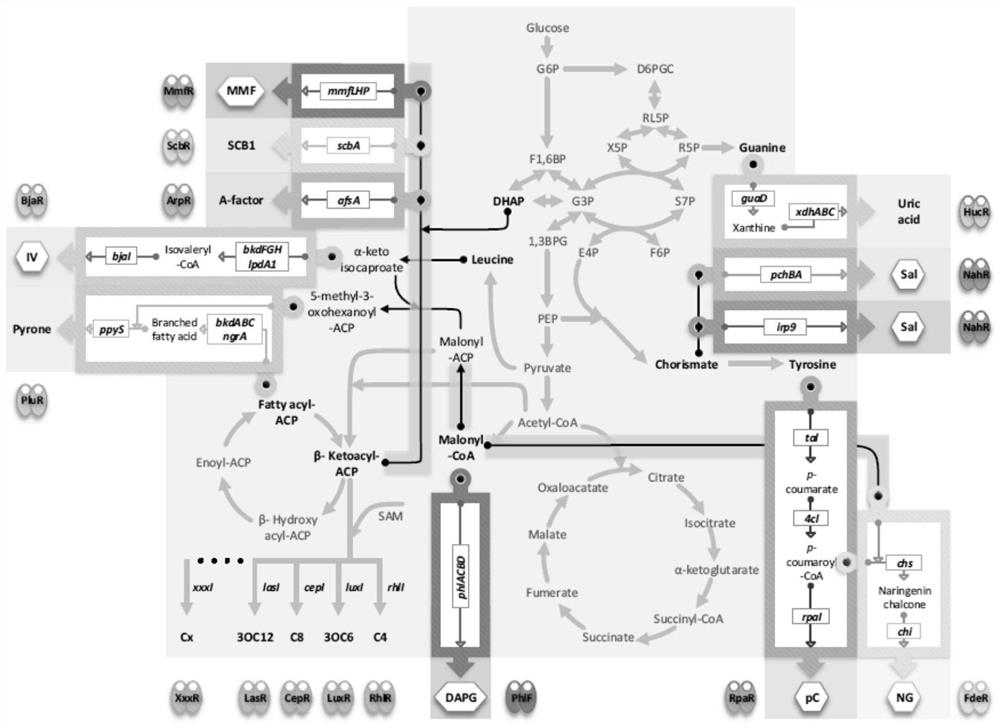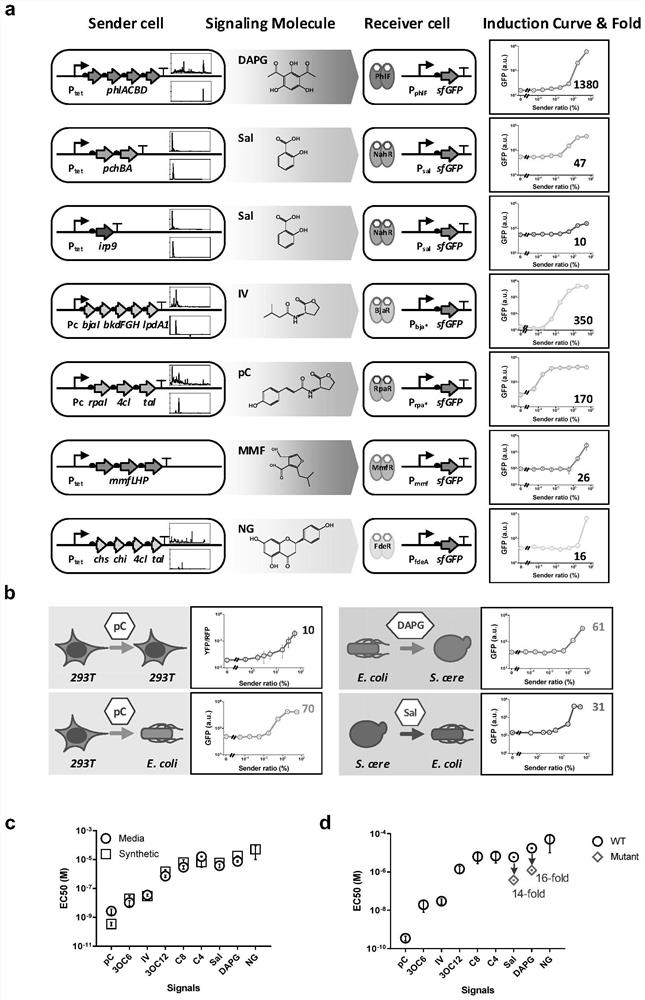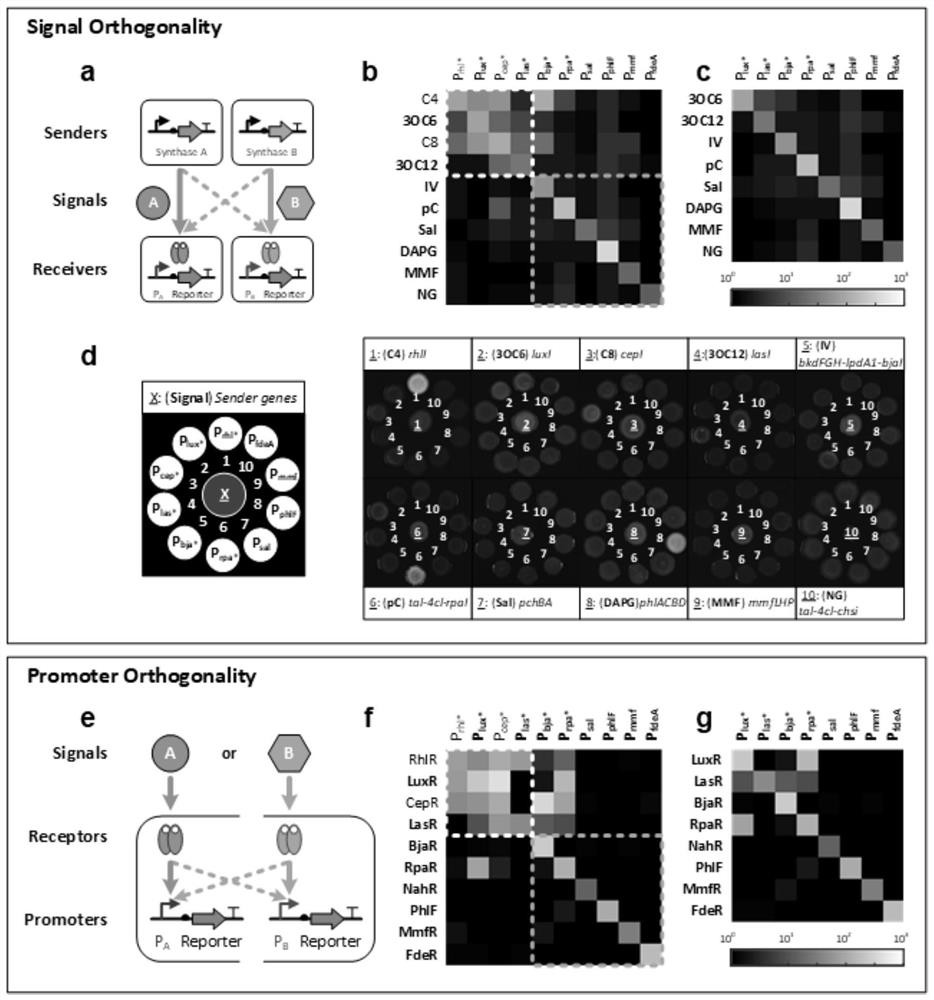Artificial design and application of intercellular communication system
A communication system and cell technology, applied in the fields of bioengineering and genetic engineering, can solve problems such as difficult transformation and unclear biosynthetic pathways, and achieve the effect of improving predictability
- Summary
- Abstract
- Description
- Claims
- Application Information
AI Technical Summary
Problems solved by technology
Method used
Image
Examples
Embodiment
[0119] Design concepts for signal transmitting and / or signal receiving components
[0120] For DAPG, pC, IV, Sal, MMF, and NG transmitters and receivers ( figure 2 a), design optimization based on the following concepts.
[0121] Sal signaling: putative Pseudomonas putida promoter P reported sal (SEQ ID NO:54) is active in E. coli [28]. The inventors of the present invention have found that Sal that expresses both isochorisate-pyruvate lyase (AEO73196.1) and isochorisate synthase (WP_003114686.1), or only salicylate synthase (WP_005168693.1) Transmitter cells can be activated with P sal Receiver cells for inducible promoters ( figure 2 a).
[0122] DAPG signaling: It has been reported in the art that the use of P phlF (SEQ ID NO: 53) to screen TetR family repressors [29]. We heterologously expressed the phlACBD gene cluster of Pseudomonas fluorescens in E. coli. Co-culture experiments showed that DAPG receivers can be activated by DAPG transmitters.
[0123] NG sign...
PUM
 Login to View More
Login to View More Abstract
Description
Claims
Application Information
 Login to View More
Login to View More - R&D
- Intellectual Property
- Life Sciences
- Materials
- Tech Scout
- Unparalleled Data Quality
- Higher Quality Content
- 60% Fewer Hallucinations
Browse by: Latest US Patents, China's latest patents, Technical Efficacy Thesaurus, Application Domain, Technology Topic, Popular Technical Reports.
© 2025 PatSnap. All rights reserved.Legal|Privacy policy|Modern Slavery Act Transparency Statement|Sitemap|About US| Contact US: help@patsnap.com



